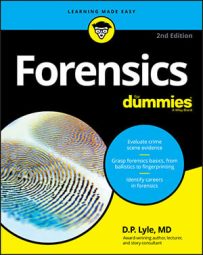Forgery typically is defined as writing or altering a document with the intent to defraud. Document examiners may be able to determine whether a document was altered or written by someone other than the stated author, but determining whether the writer's intent was to defraud is left up to a judge or jury.
Even the most careful and gifted forgers leave behind evidence of their efforts. Examiners inspect documents not only with the naked eye but also view them under a microscope, which often reveals telltale signs of forgery.
Two of the more common methods of forgery are freehand simulation and tracing. Freehand simulation simply means attempting to copy a signature or handwriting sample, and tracing involves placing another document over an original signature and tracing its lines. Each technique leads to various defects in the writing, and an examiner can identify them as the result of forgers writing in a manner that's unnatural. Perfectly matching someone else's writing style is not an easy task.
Common clues that reveal forgery include
Evidence of a previous drawing, which can include an underlying tracing of the words or signature
Forger's tremors, which are fine yet distinguishable markings that indicate shakiness in the writing and happen when the forger attempts to copy a signature or writing style
Uneven writing speed and pen pressure
Hesitations
Unusual pen lifts, where the forger continually checks his handiwork
Patching and retouching, fixing or adding marks
Blunt beginnings and endings
Another special form of forgery is disguised writing, a deception in which writers attempt to camouflage their own writing. Many ransom notes and threatening letters are written this way in hopes that the author can deny ownership at a later date. Suspects sometimes attempt to disguise their writing when confronted with an incriminating letter they foolishly wrote in their natural handwriting.

